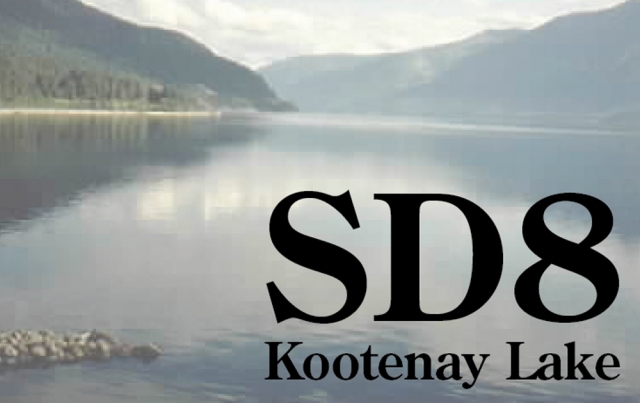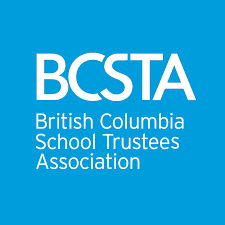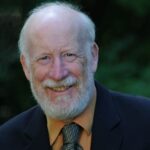The figures are in: enrollments slipping in local schools
Enrolments are declining across the region in both School District No. 8 and in Selkirk College’s regional campuses, but respective administrations aren’t ready to push the panic button.
The first enrolment total of the year for SD8 (as of Sept. 30) was 5,086 by a “head count,” a number that was down from initial estimates for the 2011-12 year.
However, some students take more than a full course load, and others take less than a full course load, a situation that makes the numbers misleading, said SD8 superintendent Jeff Jones.
As for full time equivalent students enrolled in SD8, there were 4,823 students registered in the district, a drop of 208 students from the final 2010-11 total of 5,031 students enrolled district wide in full time programs as recorded in June.
“Our enrolment is lower than we expected, mostly due to decreased enrolment in our distributed learning programs (DESK, Homelinks),” said Jones. “The way that distributed learning students were calculated for purposes of funding has changed since last year — thus reducing our total FTE count for students in these programs.”
B.C.’s school districts receive funding for every student they enroll. Preliminary funding for SD8 for the 2011-12 year was determined last March based on district enrolment estimates.
Near the end of the 2010-11 school year a provincial audit of the school’s enrollment revealed some reporting errors, ones the SD8 administration is appealing.
At issue were the Ministry of Education’s expectations SD8 remove First Nation students out of classrooms for different learning in order to qualify to receive funding.
“We believe a funding model such as this is archaic and demeaning to our students,” said SD8 board of trustees chair Mel Joy in a letter to local school districts late last month.
After the school district was penalized for offering a more “respectful” program for First Nation students they were told that the requirements for the funding had changed for the 2011-2012 school year.
Although the ministry agreed with their concerns — and the new criteria was aligned with SD8’s programming — the ministry still insisted on taking back their 2010-11 aboriginal funding.
“We have been working very closely with all of our schools to ensure that there is a complete understanding of funding criteria, in order to avoid some of the challenges we encountered during our enrolment audit last year,” said Jones.
“However, there are many of the auditor’s observations with which we continue to disagree – but about which the Ministry has demonstrated no interest in pursuing with us.”
Three years ago SD8 lost around 120 students, and 80 fewer students were enrolled for the 2009-2010 school year. A drop in enrolment forced reorganization and reconfiguration of schools in SD8 in 2007 when the district reconfigured schools in Nelson so elementary schools were K to Grade 5, Trafalgar became a Grade 6 to 8 middle school and LV Rogers took on Grade 9 to 12 students.
The five years of reconfiguration saw the closure of several schools in the Nelson area, including Central Elementary School, Gordon Sargent Primary and AI Collinson on the North Shore.
By the numbers: enrollment
SD8 schools that experienced growth of 20 or more FTE students included: Hume Elementary School (Nelson); Salmo Elementary School; Crawford Bay School; and Canyon/Lister Elementary School.
Schools that experienced a decrease of 20 or more FTE students included: Salmo Secondary School; LV Rogers Secondary School (Nelson); South Nelson Elementary School; Prince Charles Secondary School (Creston); Erickson Elementary School; Homelinks; and DESK.
However, enrollment in the International Student program in SD8 is presently 90 (67 full time equivalent) students, which is the highest fall enrolment in the history of the program.
Enrolling schools to date are Adam Robertson Elementary, Crawford Bay Elementary Secondary, Erickson Elementary, L.V. Rogers Secondary, Mt. Sentinel Secondary, Prince Charles Secondary, Salmo Elementary, South Nelson Elementary, and Trafalgar Middle School.
The countries represented this year in the program are: China, Korea, Germany, Mongolia, Venezuela, Mexico and Brazil.
College conundrum
Enrollment at Selkirk College in 2010/11 declined to a utilization rate (capacity) of 83 per cent overall from a peak of 92 per cent in 2009-10.
From 2010 to 2011 that represented a drop of 65 students, around 3.2 per cent of the 2,022 the school contained in 2010.
The Nakusp campus held steady at 31 students, as did Grand Forks at 61, but Kaslo was down 33.3 per cent, or 17 students, from 51 to 34 in 2011.
The three campuses in Nelson were down 26 students to 533 in 2011, while Castlegar’s student body was reduced by 84 students to 960 — an eight per cent drop. In Trail, the student population increased by 62 students — the only campus to have a rise — to 338 (22.5 per cent).
The largest drop in enrolment for Selkirk was industry and trades training, that fell by 20.9 per cent, or 38 students, to 144 overall, while university arts and sciences transfer program was down 14 per cent (60 students) to 369 people in 2011.
The overall drop did not concern communications and development director Barry Auliffe since the 3.2 per cent change was quite small — and enrollment numbers were cyclical.
“Generally, university transfer is a softer area for everyone right now,” he said. “And our size means a drop or rise of a few students in any one program makes a difference.”
Any drop in enrolment is linked to what the job marketplace is dictating as people choose their career path, he said.

























Comments